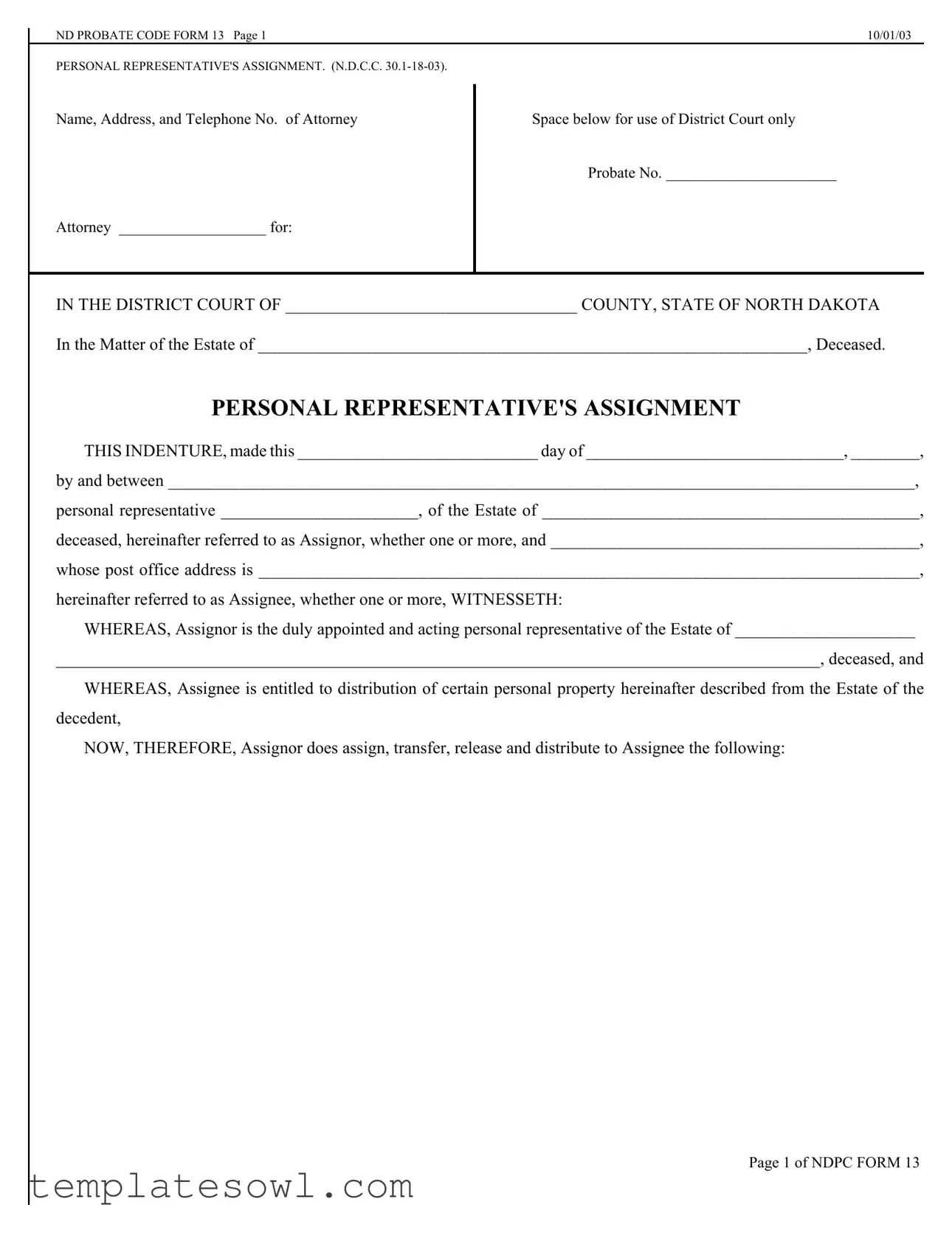What is the NDPC 13 form used for?
The NDPC 13 form, also known as the Personal Representative's Assignment, is utilized in North Dakota probate proceedings. It is specifically used by the personal representative of an estate to assign certain rights or distributions of personal property to another party, known as the Assignee. This formalizes the transfer of property after a decedent's death, clarifying who is entitled to what from the estate.
Who should complete the NDPC 13 form?
The personal representative of the estate is responsible for completing the NDPC 13 form. This individual has been appointed by the court to manage the estate's affairs. It is important that this person accurately represents the interests of the estate and acts in accordance with the decedent's wishes as outlined in their will, if one exists.
What information is required on the NDPC 13 form?
The form requires specific information, including the names and addresses of both the Assignor (the personal representative) and the Assignee. Additionally, it must include details about the deceased, including their name and the probate number. It is also necessary to specify the personal property being assigned from the estate.
Is it necessary to have the NDPC 13 form notarized?
Yes, the NDPC 13 form must be notarized. This means that the personal representative must sign the document in the presence of a notary public. The notary will then acknowledge this signature, adding an extra layer of legitimacy to the assignment. This helps to ensure that the transfer is recognized legally and can prevent disputes over the assignment later on.
Can anyone challenge an assignment made with the NDPC 13 form?
Yes, an assignment made via the NDPC 13 form can be challenged. Interested parties, such as heirs or beneficiaries, can dispute the validity of the assignment on various grounds. These might include claims that the personal representative acted improperly or that the assignment does not align with the decedent’s wishes or estate plan.
What happens after the NDPC 13 form is completed?
Once the NDPC 13 form is completed and notarized, it should be filed with the probate court as part of the estate administration process. This ensures that the assignment is officially recorded and recognized by the court. It also helps establish clear records of what property has been assigned and to whom, which is essential for the estate's proper management and distribution.
Where can I obtain the NDPC 13 form?
The NDPC 13 form can be obtained from multiple sources. Typically, it is available at local county probate court offices in North Dakota. Additionally, it can often be found on official state government websites or legal resource websites that provide probate forms. It is advisable to ensure that you are using the most recent version of the form to prevent any issues during the probate process.


